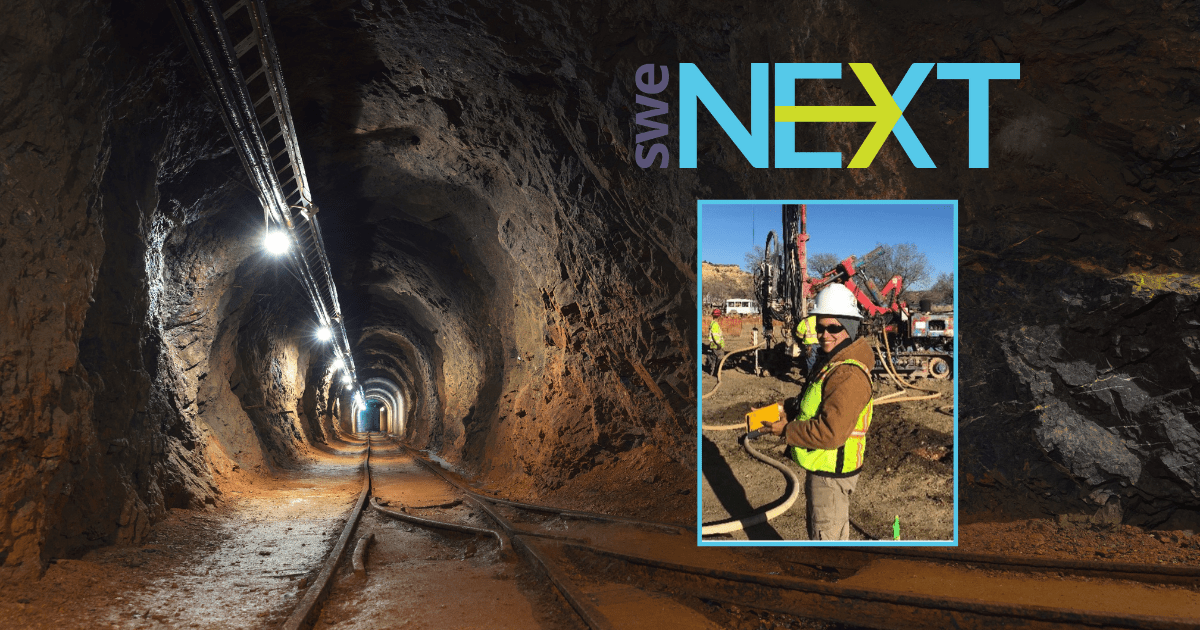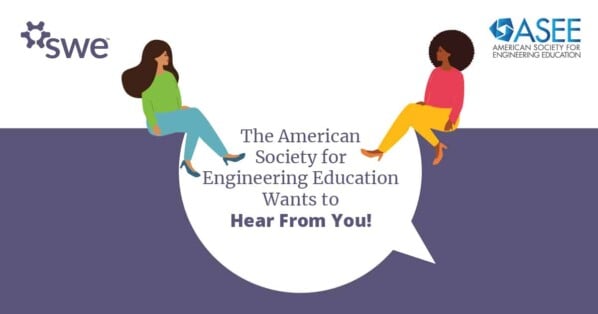As a child, I was fascinated by science classes. I was particularly interested in anything having to do with geology and earth’s processes. I grew up in a small mining town in Arizona with my grandparents. There was a big copper mine that everyone in the town worked at, so I knew about mining from a young age. My grandfather had worked in that mine for many years before he retired, and he had a huge rock and mineral collection from all his years at the mine. My twin sister and I were fascinated by his collection as children. This is what sparked my interest in mining.
 Mining involves the extraction of minerals from the earth. These minerals are used to create products that people use every day. Mining engineers apply their engineering and scientific knowledge and experience to ensure that mining is done efficiently, safely, and without causing undue harm to the environment. It is a broad field that includes mine planning and design, specialized engineering involving rock and soil mechanics, ventilation design to bring fresh air to underground miners, explosives engineering, and reclamation design to return the landscape to a beneficial use after mining. Mining engineers can work in large open-pit mines that are dug down from the ground surface, in underground mines deep under the earth, as design engineers in consulting companies, and in government agencies. There are many career opportunities for mining engineers.
Mining involves the extraction of minerals from the earth. These minerals are used to create products that people use every day. Mining engineers apply their engineering and scientific knowledge and experience to ensure that mining is done efficiently, safely, and without causing undue harm to the environment. It is a broad field that includes mine planning and design, specialized engineering involving rock and soil mechanics, ventilation design to bring fresh air to underground miners, explosives engineering, and reclamation design to return the landscape to a beneficial use after mining. Mining engineers can work in large open-pit mines that are dug down from the ground surface, in underground mines deep under the earth, as design engineers in consulting companies, and in government agencies. There are many career opportunities for mining engineers.
When I was getting ready to go to college, I visited the New Mexico Institute of Mining and Technology and took a tour with the geology department. Right next to the geology booth was the mining engineering booth. I talked to the Chair of the Mining Engineering Department and he said, “mining engineering has many components of geology, but you can also apply math and science to design things to help make life better for people. You can provide critical minerals that they need to have successful lives.” It was just that one contact that got me hooked into engineering.
Both my twin sister and I attended the New Mexico Institute of Mining and Technology, and we got our degrees in Mining Engineering together. I had three internships during my summers when I was at university. I interned at open-pit copper mines in Arizona and New Mexico and at an underground potash mine in New Mexico. Potash is used in fertilizer. During my internships, I worked with surveying crews, the haulage division, and the mine planning departments. I learned how to determine which areas of the mine were the most economical to mine next, helped to lay out new areas of the mine through surveying, and helped to select the right equipment to haul out the ore that was mined. My favorite internship was at the underground potash mine since I got to go hundreds of feet underground every day. It was a surreal experience to see this whole community of workers below ground working so efficiently.
After I finished my bachelor’s degree, I stayed at New Mexico Tech to get a master’s degree in mining engineering. When I graduated and started my career, I worked in consulting as a mining engineer, but I also used civil engineering for my work. This led me to get a second master’s degree in civil engineering while working as a consultant.
 I have a really unique job now as Principal Engineer for the New Mexico Abandoned Mine Land Program. Across the state of New Mexico, there are thousands of abandoned mine openings. There was a time where miners would just open up holes in the ground to look for valuable minerals, but then they walked away and did not protect or reclaim the land. This left dangerous mine openings and mine waste material across the state. Our program designs closures to seal off the old mine openings so people can’t fall in them or intentionally enter them to explore. Old mines have many hazards in them, such as dangerous gases or old explosives. They can also collapse. We make sure our safeguarding designs still allow wildlife like bats to use the mines because old mines provide an important habitat for them. My job also involves reclamation of abandoned mine lands. Reclamation is returning the land to a functional, healthy use after mining. For the reclamation work I do, we are reclaiming old mining sites for wildlife.
I have a really unique job now as Principal Engineer for the New Mexico Abandoned Mine Land Program. Across the state of New Mexico, there are thousands of abandoned mine openings. There was a time where miners would just open up holes in the ground to look for valuable minerals, but then they walked away and did not protect or reclaim the land. This left dangerous mine openings and mine waste material across the state. Our program designs closures to seal off the old mine openings so people can’t fall in them or intentionally enter them to explore. Old mines have many hazards in them, such as dangerous gases or old explosives. They can also collapse. We make sure our safeguarding designs still allow wildlife like bats to use the mines because old mines provide an important habitat for them. My job also involves reclamation of abandoned mine lands. Reclamation is returning the land to a functional, healthy use after mining. For the reclamation work I do, we are reclaiming old mining sites for wildlife.
For girls interested in engineering, I recommend they try to learn more about what an engineer does and to take introductory classes for engineering fields they are interested in. That way, you can find the engineering field that really sparks your passion. If you’re interested in mining engineering, find a school that has a strong mining engineering program and take advantage of internship opportunities. Finally, take advantage of the many scholarship opportunities for engineering students. Because there is such a need for engineers, there are many scholarship opportunities. Even though I didn’t have a college fund, I was able to pay for college through scholarships and my internship opportunities. Mining engineering would benefit from having more women and people from diverse backgrounds. I am a Hispanic woman and am especially proud to bring my experiences to this field. The world needs more engineers to help make life better for people, and you can have a fulfilling career in engineering.
Related content:
- A Day in the Life of Manufacturing Engineer Dominique
- A Day in the Life of Architectural Engineer Hailey B. Ihlow
- A Day in the Life of Nuclear Engineer Hailey Green
- A Day in the Life of Petroleum Engineer Dr. Shawn Simmons
- A Day in the Life of Industrial Engineer Michele Morham
- A Day in the Life of Agricultural Engineer Andrea Lima
- A Day in the Life of a Marine Engineer
Author
-

SWE Blog provides up-to-date information and news about the Society and how our members are making a difference every day. You’ll find stories about SWE members, engineering, technology, and other STEM-related topics.






